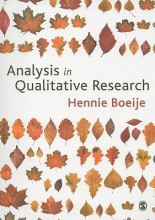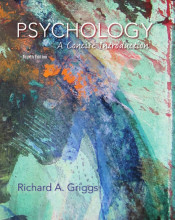Decision making and creativity
59 important questions on Decision making and creativity
How do we call the conscious process of making choices among alternatives with the intention of moving toward some desired state of affairs?
What are three different kinds of job practices that promote motivation?
- Frequent rotation
- Job enlargement
- Job enrichment
Name the steps taken in the rational decision making process.
- identify problem or opportunity
- choose best decision process
- discover or develop possible choices
- select the choice with the highest value
- implement the selected choice
- evaluate the selected choice.
- Higher grades + faster learning
- Never study anything twice
- 100% sure, 100% understanding
What do the job practices frequent rotation and job enlargement produce?
- Higher motivation
- Better knowledge
- Lower health risks
- Greater workforce flexibility
How do we call decisions that require all steps of the decision making model because they're new, complex, or ill-defined?
Step 3 and 4 of the rational decision making model are; discover and develop possible choices, and select the choice with the highest value. explain how this goes.
- first a list of criteria is selected that all choices need to meet in order for them to be taken in consideration
- next, the valences of these criteria are selected.
- the probability of that each criteria will be met by the choice.
- value of the choices is calculated by the sum of multiplying chance of criterion being realized times value of the criterion.
- choice with the highest value is chosen.
How does one gain psychological empowerment?
- Self-determination
- Meaning in the job
- Belief in competence
- Job impact
What are the problems with the rational decision making model?
- goals are ambiguous, conflicting, and lack agreement
- people have limited information processing abilities
- people evaluate alternatives sequentially.
- people evaluate alternatives against an implicit favorite
- people make choices using perceptually distorted information
- people satisfice
How is psychological empowerment reached?
- Wide variety of workplace conditions
- Individual characteristics
How do we call the view that people are limited in their decision-making capabilities. including access to limited information, limited information processing, tendency toward satisficing rather than maximizing when making choices.
What are the characteristics of performance-based?
- Motivates task performance
- Ownership culture
- May weaken job motivation
- May distance task giver from receiver
- Discourages creativity
How do we call a preferred alternative that the decision maker uses repeatedly as a comparison with other choices?
What are performance based organizational rewards?
- ESOP
- Stock options
- Profit-sharing plan
How do we call the process of screening out information that is contrary to our values and assumptions, and to more readily accept confirming information?
What are the characteristics of competency-based rewards?
- Flexibility
- Improves quality
- It is subjective
- Expensive
How do we call an emotional experience caused by a perception that our beliefs, feelings, and behavior are incongruent with one another?
What are the characteristics of job status-based rewards?
- Internal equity
- Compete for promotions
- Hierarchy
How do we call cognitive shortcuts, or mental rules of thumb used while making decisions?
What are the characteristics of membership- and seniority-based rewards?
- May reduce turnover and attract applicants
- Does not promote job performance
What are the characteristics of decision heuristics?
- used to simplify things
- help make quick decisions
- lead to decision making errors, especially with complex decision in uncertain environments.
What are the benefits of job specialization?
- Less time is lost
- Mastered more quickly
- More proficient
- Best suited applicant and job
How do we call a natural tendency for people to be influenced by an initial provided piece of information such that they do not sufficiently move away from that point as new information is provided?
What is scientific management?
- Job specialization
- Task standardization
How do we call a natural tendency to estimate probabilities by how easy we can recall the event, even though other factors influence ease of recall
How do we call a natural tendency to estimate probability of something by its similarity to something known rather than by more precise statistics?
How do we call it when when decision makers are presented with more options, they are less likely to make any decision at all?
What are social characteristics?
- Feedback from others
- Emotional labor
- Task interdependence
In which ways do emotions affect the evaluation of alternatives?
- emotions form early preferences; emotions shape preferences before we are able to consciously evaluate them --> leads to implicit favorites
- emotions change the decision evaluation process; we pay more attention to detail when in a negative mood. positive emotions make us rely on programmed decision making rocesses
- emotions serve information when we evaluate alternatives; we are guided in decision making by what emotions we experience when we imagine what a choice would be like, we use these emotions as information.
How do we call the ability to know when a problem or opportunity exists and to select the best course of action without conscious reasoning?
How do we call a systematic process of thinking about alternative futures and what the organization should do to anticipate and react to those environments?
How do we call the tendency to repeat an apparently bad decision or allocate more resources to a failing course of action?
What are the main influences on people to act out of escalation of commitment?
- the self-justification effect
- self-enhancement effect
- prospect theory effect
- sunk costs effect
How does the self-justification effect influence our tendency to repeat bad decisions?
- we like to convey a positive public image of ourselves
- we want to appear rational and competent in decision-making.
- we are therefor motivated to demonstrate that our choices will be successful.
- coming back from a decision would show incompetence
How does the self-enhancement effect influence our tendency to repeat bad decisions?
- we have the tendency to feel good about ourselves, and to estimate ourselves as better than average, and better than we actually are.
- when presented with signals that our decisions aren't working out as we thought they would, unconscious processes alter this information by creating an interpretation that this is a temporary state in an otherwise positive outcome.
- also we tend to falsely believe we have the capabilities to fix the consequences of our decisions, so we continue with them.
What is the difference between the self-justification effect and the self-enhancement effect?
- self-justification is about a public image, self-enhancement about self-view and self-esteem.
- self-justification is about actively standing behind the decision to show rationality and competence, self-enhancement unconsciously alters information letting us believe everything is fine.
How do we call a natural tendency to feel more dissatisfaction from losing a particular amount than satisfaction from gaining an equal amount?
How does the prospect theory effect influence our tendency to repeat bad decisions?
How does the sunk costs effect influence our tendency to repeat bad decisions?
What are the strategies to minimize escalation of commitment?
- the people who made the decision should not be the people evaluating the decision.
- publicly establish a preset level at which the decision is abandoned or evaluated
- find a source of systematic and clear feedback.
How do we call generating ideas , insights or solutions that are novel, innovative and appropriate
What are the components of the creative process model?
- preparation
- incubation
- illumination
- verification
Which component of the creative process model is described; understand the problem or opportunity. investigate information that seems relevant to the issue.
Which component of the creative process model is described; period of reflective thought. non conscious or low-level awareness, not direct attention to the issue. active divergent thinking process.
Which component of the creative process model is described; sudden awareness of a novel although vague and incomplete idea entering the consciousness. may include an initial period of fringe awareness.
Which component of the creative process model is described; detailed logical and experimental evaluation of the idea. further creative thinking
How do we call reframing a problem in a unique way and generating different approaches to the issue?
What are the characteristics of creative people?
- independent imagination
- knowledge and experience
- cognitive and practical intelligence
- persistence.
Which characteristic of creative people is described;
high openness to experience
moderately low need for affiliation
strong self-directed value
strong stimulation value
Which characteristic of creative people is described;
mot locked into a fixed knowledge mindset.
Which characteristic of creative people is described;
ability to synthesize, analyze, and apply ideas
ability to evaluate potential usefulness of ideas.
Which characteristic of creative people is described;
high need for achievement
strong task motivation
moderately high self-esteem and optimism
How do we call beliefs and norms that support the acquisition, sharing, and use of knowledge as well as work conditions that nurture these learning processes?
What organizational conditions support creativity?
- learning orientation
- intrinsically motivating jobs
- open communication and sufficient resources
- support from leaders and coworkers
Which activities encourage creativity?
- redefining the problem
- engage in playful activity
- cross-pollination; people from different work areas exchange ideas in order to come to new insights on their own problems.
Which rule of design thinking is described;
involve several people so the issue and possible solutions are viewed from several angles
include clients and end users to enable iterative process of problem identification and solution development.
Which rule of design thinking is described;
don't seek clarity to quickly
question and refine the problem
develop more than one solution to the problem.
Which rule of design thinking is described;
review past solutions to understand how those inventions tried to satisfy human needs
use foresight tools to imagine better solutions for the future.
Which rule of design thinking is described;
build several low-cost prototypes to test ideas
don't analyze alternatives at a purely conceptual level
tolerate failures; embrace learning orientation
How do we call the degree to which employees influence how their work is organized and carried out?
The question on the page originate from the summary of the following study material:
- A unique study and practice tool
- Never study anything twice again
- Get the grades you hope for
- 100% sure, 100% understanding
































